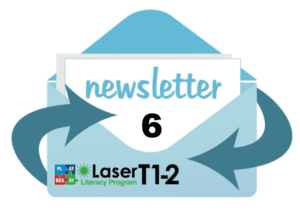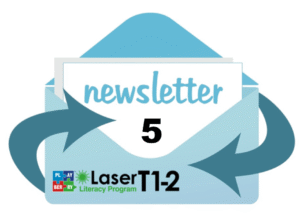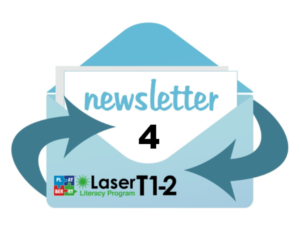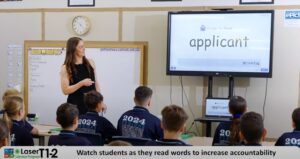What are Rosenshine's Principles of Instruction?

Bill Hansberry
Co-Director Playberry Laser
Barak Rosenshine, an American educational psychologist, developed Rosenshine’s Principles of Instruction. His principles are based on empirical research and observations of effective teaching practices. These principles aim to provide teachers with a framework for effective instructional strategies. Rosenshine began work in the 1970s and 1980s, conducting studies and synthesising research findings on effective teaching methods. His work culminated in identifying principles that he observed to be present in successful classrooms.
Rosenshine’s Principles of Instruction have gained momentum, prompting us all to consider whether our teaching is compatible with human cognitive architecture. Their common sense and simplicity strike anyone who reads them. Rosenshine’s Principles provide a clear roadmap for improving students’ retention and application of what we teach them.
Rosenshine’s Principles of Instruction reflect fundamental elements that have stood the test of time and are rooted in the foundations of successful teaching practices. For me, Rosenshine’s principles are highly congruent with the methodologies for teaching individuals with dyslexia developed by Samuel Orton and Anna Gillingham in the 1920s. The enduring nature of these effective teaching principles underscores that regardless of educational advancements and evolving methodologies, certain fundamental elements of excellent instruction remain constant.
Over this series of posts, I will lay out each of Roshenshine’s ten principles as outlined in an article Rosenshine wrote for American Educator in the Spring of 2012 and elaborate slightly on each of these, bringing some of my thoughts and insights to them, particularly in how they relate to how many of us in the evidence-informed teaching of literacy space have relearned to teach structured literacy lessons and how this explicit and routine heavy teaching has successfully spilt into other curriculum areas. I want to show how we’ve been adhering to these principles of instruction all along.
Playberry Laser T1-2 is a teacher-supportive multisensory literacy resource for primary teachers to support their teaching in line with research. We’ve taken the planning and resource design load to free teachers to focus on building content knowledge and sharpening their delivery in line with Rosenshine’s Principles of Instruction.
Principle 2: Present new material using small steps
Research Findings
Our working memory, the place where we process information, is small. It can only handle a few bits of information simultaneously – too much information swamps our working memory. Presenting too much material at once may confuse students because their working memory will be unable to process it… (Rosenshine)
One of the best ways to ensure students do not become cognitively overloaded is by not presenting too much new information at a time. New information must connect (be integrated) into existing information networks (schema) in long-term memory to be retained. Too much new information at one time overloads working memory and makes learning less efficient. Have you ever looked at your students and noticed that glazed look in their eyes and thought, “Elvis has just left the building?” Have you seen a class become wriggly and unfocused as you try to ram a concept into them? Chances are it’s Friday afternoon, or you’re seeing cognitive overload, or both!
Many of us fall victim to just trying to cover too much content too quickly. Once upon a time, I would throw content at groups of kids, like throwing spaghetti at a wall, hoping most of it would stick. Thanks to abysmal teacher training, I understood little about how their memories stored information. However, I certainly felt the pressure of a mile-wide curriculum that I needed to somehow deliver to them.
Think about the last Professional Development day you attended, where you were in the learner’s seat. How much did you remember, and how much of what you learned has changed how you teach? Unless the person who planned that instruction was knowledgeable and deliberate about the new content, the session was probably a blur of ideas. You remember if you liked the presenter (or if they rubbed you the wrong way), and that’s probably it. There was too much information presented in pieces that were too large, which likely assumed that you had more prior knowledge than you had. It was probably not sequenced all that well, and you had no time to review or rehearse as you learned. The information just kept on coming. You had spaghetti thrown at you, nor much stuck.
Effective teaching has always involved thinking hard about how much new information we ask students to deal with in any lesson and whether there is any existing (related) information already in students’ long-term memory that this new information can connect to. Less is more is an idea that has undoubtedly taken hold in my psyche over the last few years. I’ve taken a massive chill pill and reminded myself that overloading kids wastes hours of precious instructional time and that time is better spent ensuring students get ample review and practice applying new knowledge. I’d rather teach a few things well than many things poorly.
David Morkunas observed in the Dyscastia Podcast Episode 16 (coming soon) that when teachers feel time-poor, they tend to drop reviews and try to teach more content faster. David instructs teachers to focus on reviewing previously learned material during times of high interruption to learning time (like weeks when the school swimming program is running) instead of trying to cover new content.
Playberry Laser T1-2 is a teacher-supportive multisensory literacy resource for primary teachers to support their teaching in line with research. We’ve taken the planning and resource design load to free teachers to focus on building content knowledge and sharpening their delivery in line with Rosenshine’s Principles of Instruction.
Reference:
Rosenshine, B. (2012). Principles of instruction: Research-based strategies that all teachers should know. [online] American Educator, American Educator, pp.12–39. Available at: https://www.aft.org/sites/default/files/periodicals/Rosenshine.pdf.






